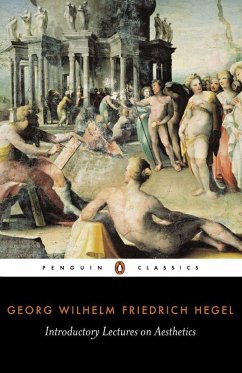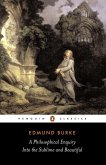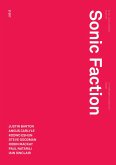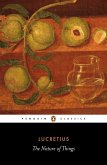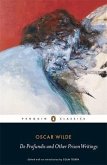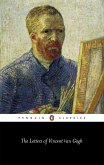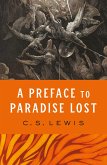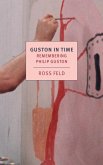Georg Hegel
Introductory Lectures on Aesthetics
Kommentar: Inwood, Michael / Herausgeber: Inwood, Michael / Übersetzer: Bosanquet, Bernard
18,99 €
inkl. MwSt.
Versandfertig in 2-4 Wochen

9 °P sammeln
Georg Hegel
Introductory Lectures on Aesthetics
Kommentar: Inwood, Michael / Herausgeber: Inwood, Michael / Übersetzer: Bosanquet, Bernard
- Broschiertes Buch
- Merkliste
- Auf die Merkliste
- Bewerten Bewerten
- Teilen
- Produkt teilen
- Produkterinnerung
- Produkterinnerung
Christianity had compromised the immediacy of man's relationship with reality, and ironic detachment had alienated him from his deepest feelings. Hegel's "Introductory Lectures on Aesthetics" were delivered in Berlin in the 1820s, and stand as a passionately argued work that challenged the ability of art to respond to the modern world.
Andere Kunden interessierten sich auch für
![A Philosophical Enquiry Into the Sublime and Beautiful A Philosophical Enquiry Into the Sublime and Beautiful]() Edmund BurkeA Philosophical Enquiry Into the Sublime and Beautiful20,99 €
Edmund BurkeA Philosophical Enquiry Into the Sublime and Beautiful20,99 €![Sonic Faction Sonic Faction]() Justin BartonSonic Faction23,99 €
Justin BartonSonic Faction23,99 €![The Nature of Things The Nature of Things]() LucretiusThe Nature of Things18,99 €
LucretiusThe Nature of Things18,99 €![De Profundis and Other Prison Writings De Profundis and Other Prison Writings]() Oscar WildeDe Profundis and Other Prison Writings9,99 €
Oscar WildeDe Profundis and Other Prison Writings9,99 €![The Letters of Vincent Van Gogh The Letters of Vincent Van Gogh]() Vincent Van GoghThe Letters of Vincent Van Gogh20,99 €
Vincent Van GoghThe Letters of Vincent Van Gogh20,99 €![A Preface to Paradise Lost A Preface to Paradise Lost]() C. S. LewisA Preface to Paradise Lost17,99 €
C. S. LewisA Preface to Paradise Lost17,99 €![Guston in Time: Remembering Philip Guston Guston in Time: Remembering Philip Guston]() Ross FeldGuston in Time: Remembering Philip Guston24,99 €
Ross FeldGuston in Time: Remembering Philip Guston24,99 €-
-
-
Christianity had compromised the immediacy of man's relationship with reality, and ironic detachment had alienated him from his deepest feelings. Hegel's "Introductory Lectures on Aesthetics" were delivered in Berlin in the 1820s, and stand as a passionately argued work that challenged the ability of art to respond to the modern world.
Hinweis: Dieser Artikel kann nur an eine deutsche Lieferadresse ausgeliefert werden.
Hinweis: Dieser Artikel kann nur an eine deutsche Lieferadresse ausgeliefert werden.
Produktdetails
- Produktdetails
- Verlag: Penguin Books Ltd
- Seitenzahl: 240
- Erscheinungstermin: 4. Januar 1994
- Englisch
- Abmessung: 196mm x 129mm x 15mm
- Gewicht: 194g
- ISBN-13: 9780140433357
- ISBN-10: 014043335X
- Artikelnr.: 21958780
- Herstellerkennzeichnung
- Libri GmbH
- Europaallee 1
- 36244 Bad Hersfeld
- gpsr@libri.de
- Verlag: Penguin Books Ltd
- Seitenzahl: 240
- Erscheinungstermin: 4. Januar 1994
- Englisch
- Abmessung: 196mm x 129mm x 15mm
- Gewicht: 194g
- ISBN-13: 9780140433357
- ISBN-10: 014043335X
- Artikelnr.: 21958780
- Herstellerkennzeichnung
- Libri GmbH
- Europaallee 1
- 36244 Bad Hersfeld
- gpsr@libri.de
Georg Hegel
Introductory Lectures on AestheticsIntroduction
A Note on the Translation and Commentary
INTRODUCTORY LECTURES ON AESTHETICS
Chapter I: The Range of Aesthetic Defined, and Some Objections against the
Philosophy of Art Refuted
[α Aesthetic confined to Beauty of Art
β Does Art merit Scientific Treatment?
γ Is Scientific Treatment appropriate to Art?
δ Answer to β
ε Answer to γ]
Chapter II: Methods of Science Applicable to Beauty and Art
[1. Empirical Method - Art-scholarship
(a) Its Range
(b) It generates Rules and Theories
(c) The Rights of Genius
2. Abstract Reflection
3. The Philosophical Conception of Artistic Beauty, general notion of]
Chapter III: The Conception of Artistic Beauty
Part I - The Work of Art as Made and as Sensuous
1. Work of Art as Product of Human Activity
[(a) Conscious Production by Rule
(b) Artistic Inspiration
(c) Dignity of Production by Man
(d) Man's Need to produce Works of Art]
2. Work of Art as addressed to Man's Sense
[(a) Object of Art - Pleasant Feeling?
(b) Feeling of Beauty - Taste
(c) Art-scholarship
(d) Profounder Consequences of Sensuous Nature of Art
(α) Relations of the Sensuous to the Mind
(αα) Desire
(ββ) Theory
(γγ) Sensuous as Symbol of Spiritual
(β) The Sensuous Element, how Present in the Artist
(γ) The Content of Art Sensuous]
Part II - The End of Art
3. [The Interest or End of Art
(a) Imitation of Nature?
(α) Mere Repetition of Nature is -
(αα) Superfluous
(ββ) Imperfect
(γγ) Amusing Merely as Sleight of Hand
(β) What is Good to Imitate?
(γ) Some Arts cannot be called Imitative
(b) Humani nihil - ?
(c) Mitigation of the Passions?
(α) How Art mitigates the Passions
(β) How Art purifies the Passions
(αα) It must have a Worthy Content
(ββ) But ought not to be Didactic
(γγ) Nor explicitly addressed to a Moral Purpose
(d) Art has its own Purpose as Revelation of Truth]
Chapter IV: Historical Deducation of the True Idea of Art in Modern
Philosophy
1. Kant
[(a) Pleasure in Beauty not Appetitive
(b) Pleasure in Beauty Universal
(c) The Beautiful in its Teleological Aspect
(d) Delight in the Beautiful necessary though felt]
2. Schiller, Winckelmann, Schelling
3. The Irony
Chapter V: Division of the Subject
[1. The Condition of Artistic Presentation is the Correspondence of Matter
and Plastic Form
2. Part I - The Ideal
3. Part II - The Types of Art
(α) Symbolic Art
(β) Classical Art
(γ) Romantic Art
4. Part III - The Several Arts
(α) Architecture
(β) Sculpture
(γ) Romantic Art, comprising
(i) Painting
(ii) Music
(iii) Poetry
5. Conclusion]
Commentary
A Note on the Translation and Commentary
INTRODUCTORY LECTURES ON AESTHETICS
Chapter I: The Range of Aesthetic Defined, and Some Objections against the
Philosophy of Art Refuted
[α Aesthetic confined to Beauty of Art
β Does Art merit Scientific Treatment?
γ Is Scientific Treatment appropriate to Art?
δ Answer to β
ε Answer to γ]
Chapter II: Methods of Science Applicable to Beauty and Art
[1. Empirical Method - Art-scholarship
(a) Its Range
(b) It generates Rules and Theories
(c) The Rights of Genius
2. Abstract Reflection
3. The Philosophical Conception of Artistic Beauty, general notion of]
Chapter III: The Conception of Artistic Beauty
Part I - The Work of Art as Made and as Sensuous
1. Work of Art as Product of Human Activity
[(a) Conscious Production by Rule
(b) Artistic Inspiration
(c) Dignity of Production by Man
(d) Man's Need to produce Works of Art]
2. Work of Art as addressed to Man's Sense
[(a) Object of Art - Pleasant Feeling?
(b) Feeling of Beauty - Taste
(c) Art-scholarship
(d) Profounder Consequences of Sensuous Nature of Art
(α) Relations of the Sensuous to the Mind
(αα) Desire
(ββ) Theory
(γγ) Sensuous as Symbol of Spiritual
(β) The Sensuous Element, how Present in the Artist
(γ) The Content of Art Sensuous]
Part II - The End of Art
3. [The Interest or End of Art
(a) Imitation of Nature?
(α) Mere Repetition of Nature is -
(αα) Superfluous
(ββ) Imperfect
(γγ) Amusing Merely as Sleight of Hand
(β) What is Good to Imitate?
(γ) Some Arts cannot be called Imitative
(b) Humani nihil - ?
(c) Mitigation of the Passions?
(α) How Art mitigates the Passions
(β) How Art purifies the Passions
(αα) It must have a Worthy Content
(ββ) But ought not to be Didactic
(γγ) Nor explicitly addressed to a Moral Purpose
(d) Art has its own Purpose as Revelation of Truth]
Chapter IV: Historical Deducation of the True Idea of Art in Modern
Philosophy
1. Kant
[(a) Pleasure in Beauty not Appetitive
(b) Pleasure in Beauty Universal
(c) The Beautiful in its Teleological Aspect
(d) Delight in the Beautiful necessary though felt]
2. Schiller, Winckelmann, Schelling
3. The Irony
Chapter V: Division of the Subject
[1. The Condition of Artistic Presentation is the Correspondence of Matter
and Plastic Form
2. Part I - The Ideal
3. Part II - The Types of Art
(α) Symbolic Art
(β) Classical Art
(γ) Romantic Art
4. Part III - The Several Arts
(α) Architecture
(β) Sculpture
(γ) Romantic Art, comprising
(i) Painting
(ii) Music
(iii) Poetry
5. Conclusion]
Commentary
Introductory Lectures on AestheticsIntroduction
A Note on the Translation and Commentary
INTRODUCTORY LECTURES ON AESTHETICS
Chapter I: The Range of Aesthetic Defined, and Some Objections against the
Philosophy of Art Refuted
[α Aesthetic confined to Beauty of Art
β Does Art merit Scientific Treatment?
γ Is Scientific Treatment appropriate to Art?
δ Answer to β
ε Answer to γ]
Chapter II: Methods of Science Applicable to Beauty and Art
[1. Empirical Method - Art-scholarship
(a) Its Range
(b) It generates Rules and Theories
(c) The Rights of Genius
2. Abstract Reflection
3. The Philosophical Conception of Artistic Beauty, general notion of]
Chapter III: The Conception of Artistic Beauty
Part I - The Work of Art as Made and as Sensuous
1. Work of Art as Product of Human Activity
[(a) Conscious Production by Rule
(b) Artistic Inspiration
(c) Dignity of Production by Man
(d) Man's Need to produce Works of Art]
2. Work of Art as addressed to Man's Sense
[(a) Object of Art - Pleasant Feeling?
(b) Feeling of Beauty - Taste
(c) Art-scholarship
(d) Profounder Consequences of Sensuous Nature of Art
(α) Relations of the Sensuous to the Mind
(αα) Desire
(ββ) Theory
(γγ) Sensuous as Symbol of Spiritual
(β) The Sensuous Element, how Present in the Artist
(γ) The Content of Art Sensuous]
Part II - The End of Art
3. [The Interest or End of Art
(a) Imitation of Nature?
(α) Mere Repetition of Nature is -
(αα) Superfluous
(ββ) Imperfect
(γγ) Amusing Merely as Sleight of Hand
(β) What is Good to Imitate?
(γ) Some Arts cannot be called Imitative
(b) Humani nihil - ?
(c) Mitigation of the Passions?
(α) How Art mitigates the Passions
(β) How Art purifies the Passions
(αα) It must have a Worthy Content
(ββ) But ought not to be Didactic
(γγ) Nor explicitly addressed to a Moral Purpose
(d) Art has its own Purpose as Revelation of Truth]
Chapter IV: Historical Deducation of the True Idea of Art in Modern
Philosophy
1. Kant
[(a) Pleasure in Beauty not Appetitive
(b) Pleasure in Beauty Universal
(c) The Beautiful in its Teleological Aspect
(d) Delight in the Beautiful necessary though felt]
2. Schiller, Winckelmann, Schelling
3. The Irony
Chapter V: Division of the Subject
[1. The Condition of Artistic Presentation is the Correspondence of Matter
and Plastic Form
2. Part I - The Ideal
3. Part II - The Types of Art
(α) Symbolic Art
(β) Classical Art
(γ) Romantic Art
4. Part III - The Several Arts
(α) Architecture
(β) Sculpture
(γ) Romantic Art, comprising
(i) Painting
(ii) Music
(iii) Poetry
5. Conclusion]
Commentary
A Note on the Translation and Commentary
INTRODUCTORY LECTURES ON AESTHETICS
Chapter I: The Range of Aesthetic Defined, and Some Objections against the
Philosophy of Art Refuted
[α Aesthetic confined to Beauty of Art
β Does Art merit Scientific Treatment?
γ Is Scientific Treatment appropriate to Art?
δ Answer to β
ε Answer to γ]
Chapter II: Methods of Science Applicable to Beauty and Art
[1. Empirical Method - Art-scholarship
(a) Its Range
(b) It generates Rules and Theories
(c) The Rights of Genius
2. Abstract Reflection
3. The Philosophical Conception of Artistic Beauty, general notion of]
Chapter III: The Conception of Artistic Beauty
Part I - The Work of Art as Made and as Sensuous
1. Work of Art as Product of Human Activity
[(a) Conscious Production by Rule
(b) Artistic Inspiration
(c) Dignity of Production by Man
(d) Man's Need to produce Works of Art]
2. Work of Art as addressed to Man's Sense
[(a) Object of Art - Pleasant Feeling?
(b) Feeling of Beauty - Taste
(c) Art-scholarship
(d) Profounder Consequences of Sensuous Nature of Art
(α) Relations of the Sensuous to the Mind
(αα) Desire
(ββ) Theory
(γγ) Sensuous as Symbol of Spiritual
(β) The Sensuous Element, how Present in the Artist
(γ) The Content of Art Sensuous]
Part II - The End of Art
3. [The Interest or End of Art
(a) Imitation of Nature?
(α) Mere Repetition of Nature is -
(αα) Superfluous
(ββ) Imperfect
(γγ) Amusing Merely as Sleight of Hand
(β) What is Good to Imitate?
(γ) Some Arts cannot be called Imitative
(b) Humani nihil - ?
(c) Mitigation of the Passions?
(α) How Art mitigates the Passions
(β) How Art purifies the Passions
(αα) It must have a Worthy Content
(ββ) But ought not to be Didactic
(γγ) Nor explicitly addressed to a Moral Purpose
(d) Art has its own Purpose as Revelation of Truth]
Chapter IV: Historical Deducation of the True Idea of Art in Modern
Philosophy
1. Kant
[(a) Pleasure in Beauty not Appetitive
(b) Pleasure in Beauty Universal
(c) The Beautiful in its Teleological Aspect
(d) Delight in the Beautiful necessary though felt]
2. Schiller, Winckelmann, Schelling
3. The Irony
Chapter V: Division of the Subject
[1. The Condition of Artistic Presentation is the Correspondence of Matter
and Plastic Form
2. Part I - The Ideal
3. Part II - The Types of Art
(α) Symbolic Art
(β) Classical Art
(γ) Romantic Art
4. Part III - The Several Arts
(α) Architecture
(β) Sculpture
(γ) Romantic Art, comprising
(i) Painting
(ii) Music
(iii) Poetry
5. Conclusion]
Commentary
